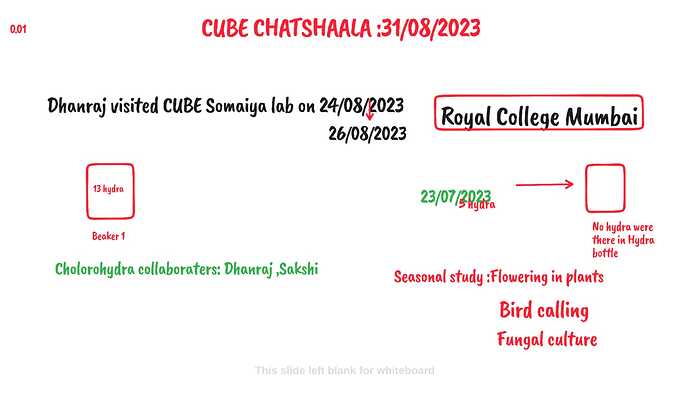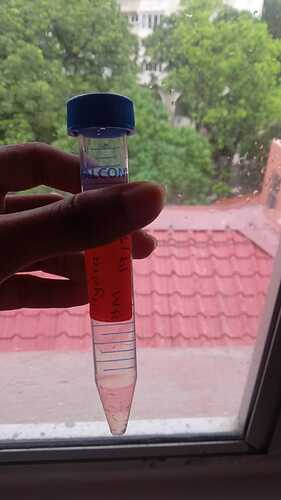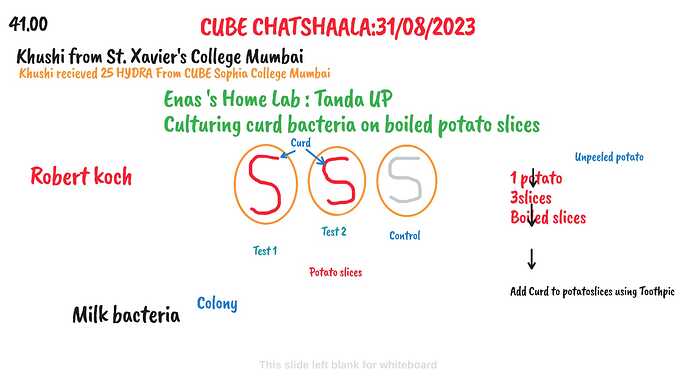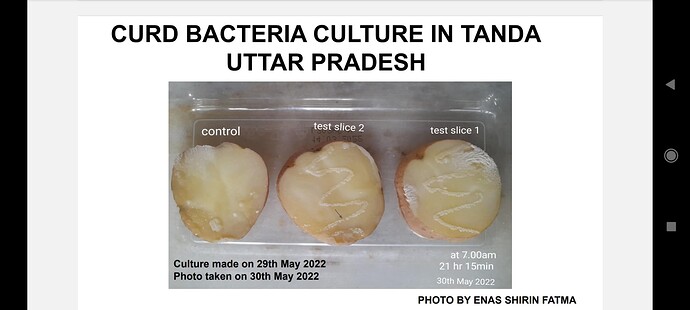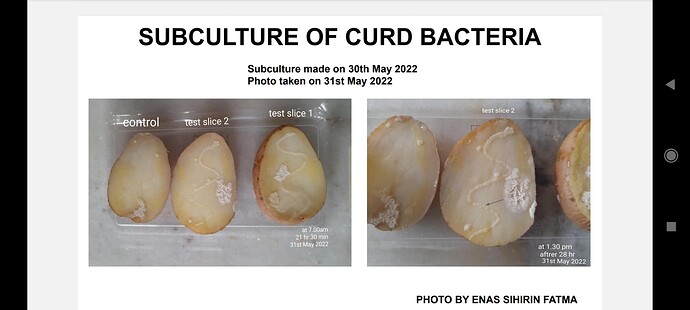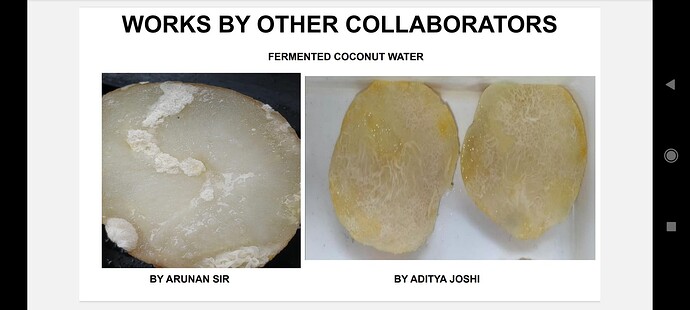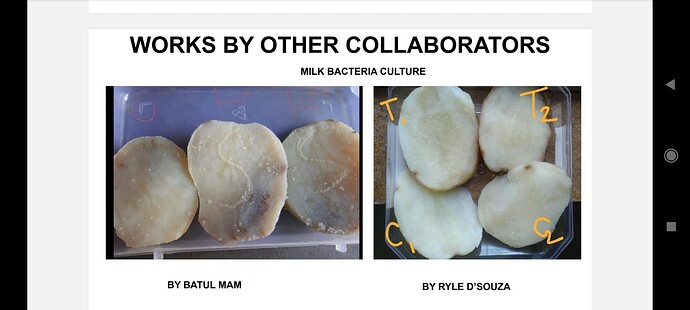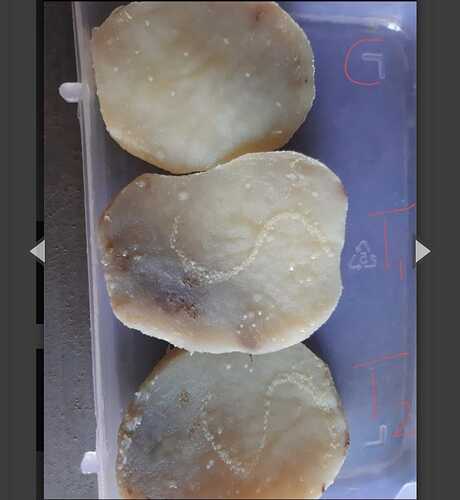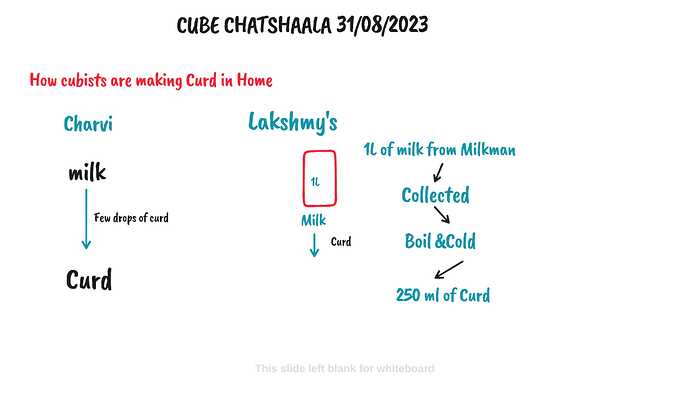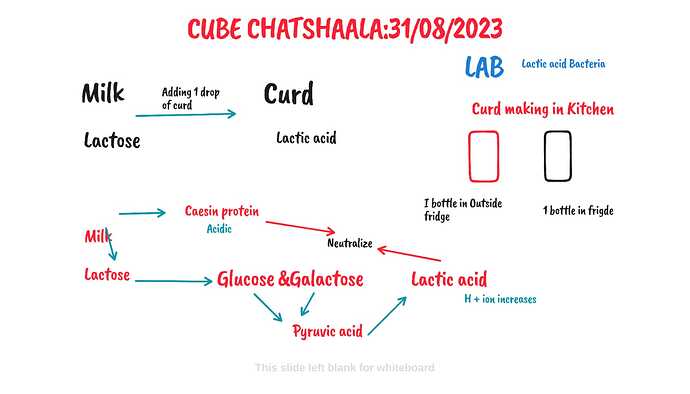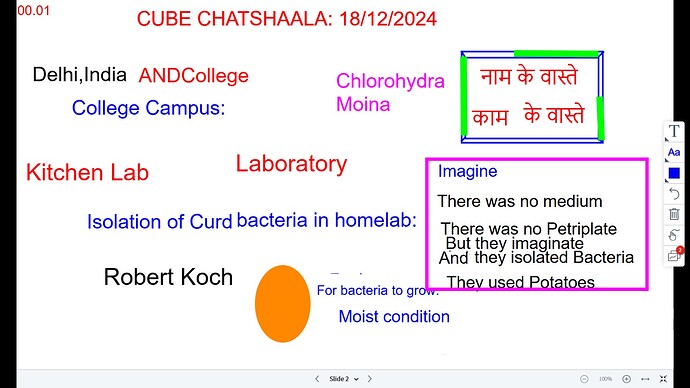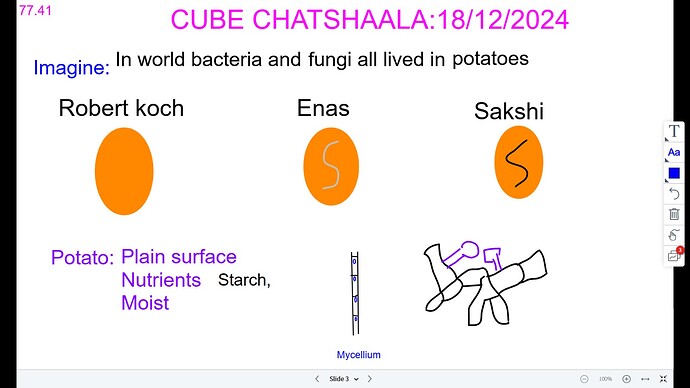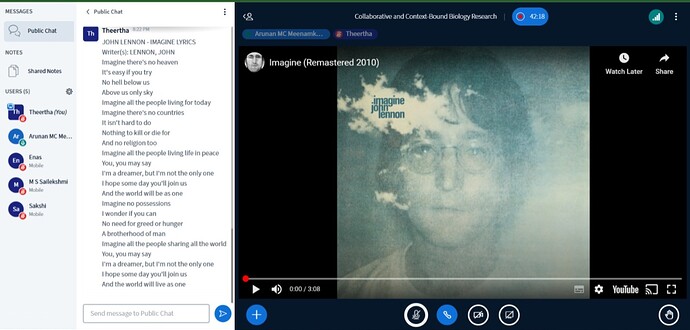How grandparents and parents making curd in kitchen !?
Is that can be a Art ?
What may be the science behind Curdling ?
Today we started discussion with @~Prof.Farhaan Makba about the Chlorohydra .
During national meet @Dhanraj CUBE has given Chlorohydra to CUBE royal college ,but No chlorohydra there in the bottle in very next day @Ryle CUBE @~Prof.Farhaan Makba @Dhanraj CUBE
!!!Where they went !? Any idea !?
19th July 2023
Received 20 hydras from sophia college.
Photo taken - khushi gupta.
from this bottle ~7 hydra given to royal college .
Interestingly , Cubists from Royal college , now trying to observe and document the photos of Flowering in plants ,calling sounds of birds&the isolation of fungus culture !
Can we get some updates @~Prof.Farhaan Makba @Ryle CUBE &others .We hope tomorrow we can meet Cubists from Royal college and learn more about their work.@~Prof.Farhaan Makba
Do we have a Way of isolating curd bacteria in Homelabs !!!
Yes we do . @Enas From Up isolated Curd bacteria by using Boiled potato slices .
Does it similar to Robert koch’s work !!!
what was Robert koch’s work!!
In an attempt to grow bacteria, Koch began to use solid nutrients such as potato slices. Through these initial experiments, Koch observed individual colonies of identical, pure cells.
Isolation of curd bacteria by @Batul Ma’am .
What a colony stands for !!
Can colony of one species of bacteria can overlap the other !?
How can be get isolated colony!?
Arts and science in Curdling !!
Are we concern about how our Grandparents/ parents are making curd home !
,Why do we want to take Grandparents/parents as an example!!!
can we make curd in homelabs !?
How are you making curd in your home .
The interesting thing was we all got stuck the way to explain how the process Curdling occuring .
No worry …let’s all do and post the updates !?
Arts and science in Curdling !!
Later we came across LAB!!
@Arunan sir Asked me that What we meant by Lactic acid bacteria ,I just split the word and made a definition " bacterias which take lacticacid as a food" ![]()
Ohhh really the voice came !!!@Arunan sir Then I got a clear idea that what I said was wrong ![]()
![]() .
.
Later we came across the Science behind the Curdling !?
Process of Curdling ;
2 teaspoons of curd can added to milk (1L) .is that the way our grandparents in our home ? @Shraddha276 @dhanraj7 & others
Milk contain lactose sugar and this convert lactic acid.
The lactose sugar taken by curd bacteria and breakdown and form pyruvic acid which under anaerobic way form lactic acid .
Milk also contain caesin protein ,an acidic protein & the H+ ion from the lactic acid will nutralize each other .
Are we clear about the process of Curdling !?
“This chapter focuses on the isolation of LAB from dairy products, especially traditional Iranian yogurt and its derivate products. Therefore, the scientific reports of isolation of many LAB, including Lactobacillus (L. casei, L. rhamnosus, L. lactis, L. bulgaricus, L. acidophilus, L. helveticus, L. plantarum, L. brevis, L. pentosus, L. paracasei, L. fermentum, L. helveticus, and L. delbrueckii), Streptococcus (S. lactis, S. diacetylactis, S. thermophiles, S. fecalis, and S. acidominimus), Leuconostoc mesenteroides, Enterococcus (E. durans, E. faecium, E. faecalis, and E. avium), Lactococcus lactis, and Pediococcus, from traditional Iranian yogurt and its derivate products has been summarized and analyzed.”
https://www.sciencedirect.com/science/article/abs/pii/B978012805134400016X#:~:text=This%20chapter%20focuses,summarized%20and%20analyzed. Reference shared in chatshaala discussion
